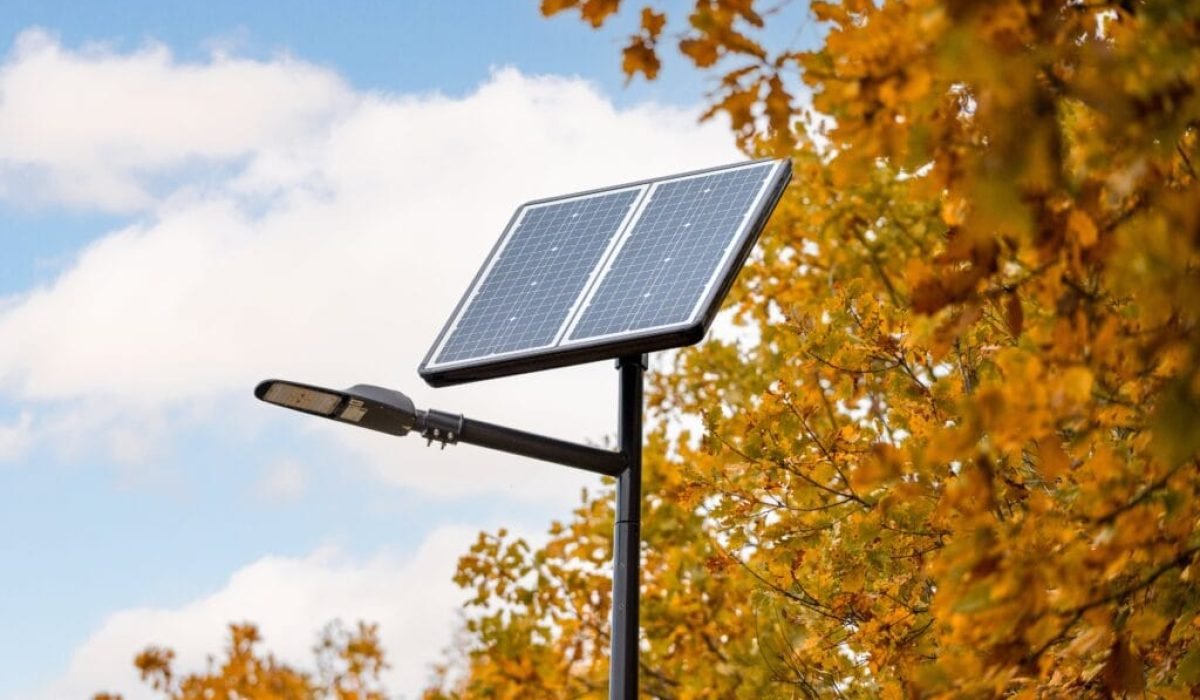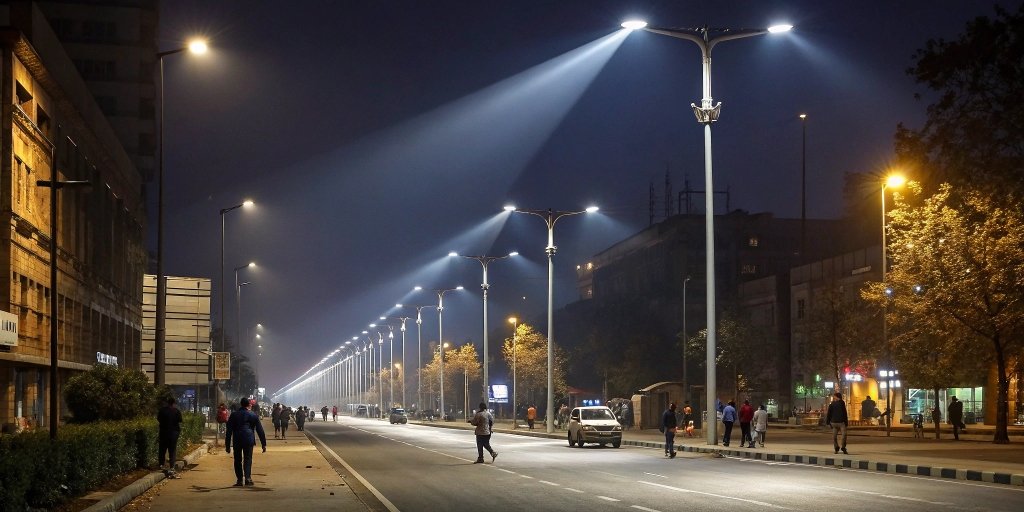As the world faces an escalating energy crisis and increasing environmental challenges, the need for sustainable and cost-effective solutions has never been more urgent. Traditional street lighting systems, which rely on grid power, not only consume significant amounts of energy but also contribute to greenhouse gas emissions. However, the rise of solar street lights offers an innovative alternative that addresses both economic and environmental concerns.
Solar street lights provide a dual advantage: they are economically beneficial due to their low operating costs and environmentally friendly because they rely on renewable energy sources. This combination of savings and sustainability makes them a powerful solution for cities, businesses, and communities seeking to enhance public infrastructure while reducing their environmental footprint.
1. Introduction: Global Energy Crisis and the Urgency of Environmental Protection
Global Energy Crisis Intensifies
The global energy crisis is becoming more severe, as countries around the world face increasing energy demand, limited fossil fuel resources, and volatile energy prices. As energy costs continue to rise, finding sustainable and affordable alternatives has become a priority.
The Growing Need for Environmental Protection
In response to the energy crisis, there has been a growing awareness of the environmental impact of traditional energy sources. Increased greenhouse gas emissions, air pollution, and climate change concerns have pushed governments and organizations to seek cleaner, more sustainable energy solutions. This shift is particularly relevant for urban areas, where street lighting plays a significant role in energy consumption.
Solar Street Lights as a Solution
Solar street lights are emerging as an ideal solution to the energy crisis and environmental protection needs. They provide solar-powered lighting that requires no grid electricity, offering a cost-effective and eco-friendly alternative to traditional streetlights. These systems not only save money over time but also reduce reliance on non-renewable energy, thus helping combat climate change.
2. Traditional Street Lights vs. Solar Street Lights: A Cost Comparison
Initial Investment and Long-Term Costs of Traditional Street Lights
Traditional street lights have a high initial setup cost due to the need for infrastructure installation, including wiring, transformers, and electric meters.
- Installation Cost: The installation process involves digging trenches to lay underground cables, which incurs significant labor and material costs.
- Energy Consumption: The ongoing electricity costs are another major factor. Traditional street lights run continuously, adding up to substantial annual energy bills.
- Maintenance Costs: Over time, traditional street lights require frequent maintenance and part replacements, such as light bulbs, ballasts, and wiring, further contributing to operational expenses.
Solar Street Lights: Initial Investment and Economic Benefits
Although solar street lights require a higher initial investment for the solar panels, batteries, and control systems, the long-term savings are significant.
- Zero Electricity Costs: Solar street lights operate independently of the grid, significantly reducing or eliminating electricity costs.
- Low Maintenance: Solar lights require minimal maintenance because they have fewer components that wear out. The LED lamps and batteries can last several years with only periodic cleaning and battery replacement.
- Cost Savings: Over time, solar street lights can save significantly on both electricity bills and maintenance costs.
Comparing Energy Savings and Self-Sustaining Energy Benefits
The most significant advantage of solar street lights lies in their ability to generate their own energy. By converting solar power into electricity, these lights reduce the dependence on the electrical grid and provide self-sustaining energy, which means that even in areas prone to power outages, solar street lights continue to function without interruption.
3. Energy Savings Benefits of Solar Street Lights
How Solar Street Lights Work: Self-Sustaining Energy Systems
Solar street lights operate by using solar panels to capture sunlight during the day and convert it into electricity. This energy is then stored in batteries for use at night.
- Solar Panels: Capture and convert solar energy into electricity.
- Batteries: Store the energy for use when sunlight is unavailable, ensuring 24-hour operation.
- LED Lights: These highly efficient lights consume less power, extending battery life and improving energy efficiency.
LED Efficiency: Maximizing Energy Savings
LED technology has drastically improved the efficiency of solar street lights. Compared to traditional lighting options like incandescent or fluorescent lamps, LED lights consume significantly less power while providing the same, if not better, illumination. This efficiency not only enhances the battery life but also contributes to overall energy savings.
Reduced Grid Dependency: A Benefit During Power Outages
In regions prone to power outages or with unreliable electricity supply, solar street lights offer a unique advantage: they are independent of the grid. This feature ensures that even during power disruptions, the lights remain functional, providing reliable illumination in critical areas such as streets, parks, and public spaces.
4. Economic Benefits of Solar Street Lights: A Deeper Analysis
Return on Investment (ROI) Analysis
One of the most compelling reasons to invest in solar street lights is their high return on investment (ROI). While the initial cost may be higher, the long-term savings from eliminated electricity bills and reduced maintenance expenses far outweigh the upfront investment.
Example:
- Initial Setup Cost: $2,000 per light
- Annual Energy Savings: $150-$300
- Maintenance Savings: $50-$100 annually
- ROI: The investment pays off in 3-5 years, with the system lasting 20+ years.
Low Maintenance Costs
Solar street lights are low-maintenance because they don't require frequent bulb replacements or electrical repairs. The battery typically lasts 5-10 years, after which it can be replaced at a low cost. This reduces the total operational cost over the lifespan of the system.
Life Cycle Cost Analysis
A life cycle cost analysis shows that, even though solar street lights have a higher initial cost, their overall cost is much lower over their entire lifespan. This makes them a cost-effective solution in the long run when compared to traditional street lights, which require continuous electricity consumption and regular maintenance.
Conclusion: A Bright Future for Sustainable Development
Solar street lights offer a dual advantage of economic savings and environmental sustainability. They not only provide a reliable, self-sustaining lighting solution but also reduce energy consumption and greenhouse gas emissions. By adopting solar lighting, cities and organizations can play a crucial role in promoting a more sustainable future.
- Key Takeaway: The economic benefits of solar street lights, including reduced operating costs and minimal maintenance, make them a smart investment for the future.
Let’s take action and move towards a greener, more sustainable future with solar street lights.






